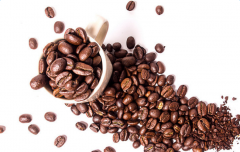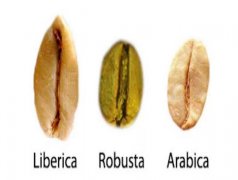Popular science | introduce you to coffee from Central American countries (part two)

For professional baristas, please follow the coffee workshop (Wechat official account cafe_style)
Guatemala
The latitude of Guatemala is about 15 degrees. Because of the long mountains and great regional climate changes, Guatemala's eight major coffee producing areas are all located on the highland topography under the subtropical climate, with rich and stable rainfall and excellent environment for fertile volcanic ash soil. The coffee beans produced are all Arabica, each with different flavors and characteristics, and the first-class sour and fruity flavors are smooth. It belongs to one of the top coffee in the world and is suitable for individual consumption.
one
Production area introduction
Antigua Antigua
Rich volcanic soil, low humidity, strong sunlight and cool night breeze are the characteristics of the Antigua area. Three spectacular active volcanoes-the Water Volcano, the Akardenango Volcano and the Fire Volcano-form a scenic valley
Palate: high-end Antigua coffee is full-bodied and mild, mellow aroma and good acidity
Planting altitude (m): 1500-1700
Akkad Nango Valley Acatenango Valley
Guatemala's emerging coffee-growing area, at an altitude of 2000 meters, the lush forests shade the coffee trees planted by small farmers, while shielding the heat from the Pacific Ocean and turning it into a moist airstream.
Palate: with acidity, strong aroma and lingering aftertaste
Planting altitude (m): 1300-2000
Koban Rain Forest Rainforest Cobb á n
Description of the producing area: the area is shrouded in clouds all year round, abundant rainfall and cool climate, and the local soil contains limestone and clay. Under the influence of the Atlantic basin and the northward jungle tropical climate, most of the coffee in this area is grown on obviously slow hilly land.
Palate: the characteristics of coffee in this area are quite different from those in other producing areas of the country. The bean body is full, with bright and subtle sour taste, with a light wine aroma.
Planting altitude (m): 1300-1500
Mount San Marcos Volcanic San Marco
Production area introduction: the warmest coffee producing area in Guatemala. The area has abundant rainfall, the rainy season is the densest, and the flowering stage is the earliest. The rainy season is the best part of the rainy season from June to September, even torrential rain, with annual rainfall as high as 197 inches in some areas
Taste: the coffee in this area has an obvious sour taste, full beans, with a clear, faint floral aroma
Planting altitude (m): 1400-1800
Traditional Traditional Atitl á n
Production area introduction: one of the four major volcanic coffee areas in Guatemala. The soil of Attland is full of fertile organic matter. 90% of the coffee is grown along extremely steep slopes all the way to Lake Attilan, the largest and most famous volcanic lake in Guatemala.
Taste: the coffee in this area is strong and intoxicating, with sweet and sour taste and full beans.
Planting altitude (m): 1500-1700
Vivette Nango Highland Highland Huehue
Production area introduction: among the three non-volcanic areas, the driest and highest-lying area for the production of single coffee. The Vivette Nango Highland is currently the most rugged and remote place in Guatemala. Due to the hot and dry wind blowing into the mountains from the Dehuang de Pecke Plain in Mexico, the mountains are free from frost, so coffee can be grown up to 6500 feet high.
Palate: the coffee beans in this area are firm and full, with a special sour taste and a slight wine aroma.
Planting altitude (m): 1500-2000
Farrakhan Nice Plain Fraijanes Plateau
The volcano in this area is very high above sea level and the soil is rich in pumice. Farrakhan Nice Plain is still an active volcano, so the coffee in this area is similar to that of Antigua. However, Rain Water's abundance, high and varied humidity, and large temperature difference give the Farrakhan Nice Plain a very different flavor.
Palate: contains quite elegant aromas, mild and mellow overall texture, with special and pleasant acidity
Planting altitude (m): 1400-1800
Honduras
Honduras was previously less well-known in the consumer market because it did not have strong support for the handling and transportation of raw beans. In recent years, Honduras has actively changed and expanded the coffee industry, which has gradually opened up the international popularity of Honduran coffee. Honduras collects 3 million bags of coffee every year, providing the world with perfect coffee, unique coffee aroma and multi-quality, making it the second largest coffee exporter in Central America and the tenth largest coffee exporter in the world.
Honduran coffee is divided into six major producing areas, covering the west and south, namely, Copan, Opalaca, Montecillos, Comayagua, Agalta Tropical and El Paraiso, with an average height of more than 1100 meters above sea level.
Honduran coffee is of first-class quality and the price is the most competitive in Central American countries, mainly exported to the United States, Germany and Japan. Coffee varieties are 100 per cent Arabica, 69 per cent are HG and 12 per cent are SHG,19% and CS. There are mainly Typica, Bourbon, Caturra, Villa Sarchi and Lempira brands.
one
Production area introduction
Section Copan
Origin: located between Copan, Ocotepeque and Lempira regions
Taste: the coffee in this area shows a strong chocolate flavor, characterized by the sweetness of honey and caramel, and the fruit flavor is relatively light.
Planting altitude (m): 1000-1500
Opalaca of Obalaka district
Origin: located between Santa B á rbara, Intibuca and Lempira regions
Palate: shows a strong lemon flavor, neutralized with honey and caramel sweetness, with obvious fruit flavor
Planting altitude (m): 1100-1400
Montecillos, West right District of Mund
Origin: located between La Paz, Comayagua, Santa B á rbara and Intibuca regions
Palate: full of fruity and sweet aromas with lemon and floral flavors. Lemon and fruit aromas are important features, especially peaches and oranges
Planting altitude (m): 1200-1600
Comayagua of Gongmayagua District
Origin: located between Comayagua and Francisco Morz á n regions
Palate: lemon-based, with sweet and chocolate aromas
Planting altitude (m): 1000-1500
Panama
The flavor and texture of Panamanian coffee is medium and uniform, with a temperament similar to that of the Blue Mountains. Panamanian coffee is very smooth, full grains, light weight, and perfect acidity balance, its high-quality coffee beans flavor is pure, very characteristic, it is recommended to adopt moderate roasting.
Most Panamanian coffee belongs to the middle and low price level, but in recent years, Panama has also actively promoted the cause of boutique coffee and sold its high-quality coffee beans at competitive auctions. Good Panamanian beans with clean and clear, bright and gentle taste, medium mellow performance is amazing, is considered by coffee connoisseurs to be one of the very good coffee, many buyers like to use Panamanian beans as comprehensive products, almost all high-quality coffee beans are shipped to France and Finland.
one
Production area introduction
Bokui Special Administrative region Boquete
Origin: high altitude and high mountains
Taste: the multi-quality coffee produced is the region with the highest coffee production and the best quality in Panama.
Planting altitude (m): 1450
Volcan in volcanic area
Origin: Volcano Baru, with its fertile volcanic soil and cool climate, is a good environment for growing coffee.
Palate: the mild and balanced taste has gradually attracted the attention of international experts and coffee lovers, almost on a par with the Boquis Special Administrative region.
Planting altitude (m): 2000-3000
Santa Clara District Santa Clara
Origin: close to the Pacific coast, irrigated by clear river water brought by Chorerra Falls
Palate: refreshing, gentle, smooth and beautiful on the palate.
Planting altitude (m): 1500
Piedra de Candel, Kendra District
Origin: luxuriant Typica and Caturra trees growing in the shade of giant trees next to the primeval rainforest
Taste: it is expected to have the potential to develop high-quality premium coffee.
Planting altitude (m): 1200
Disclaimer: some of the pictures on the site come from the network, and the content, such as pictures, we will respect the origin of the original copyright, but due to the large number, there will be individual pictures and texts not in time to indicate, please forgive me. If the original author has any disputes can contact the website to deal with, once verified we will immediately correct, by the "coffee workshop" collation and editing, reprint please indicate, this article is intended to spread coffee culture, if infringement, please inform to delete, thank you!
Important Notice :
前街咖啡 FrontStreet Coffee has moved to new addredd:
FrontStreet Coffee Address: 315,Donghua East Road,GuangZhou
Tel:020 38364473
- Prev

How to write a coffee-controlled composition for the college entrance examination?
Professional barista communication please follow the coffee workshop (Wechat official account cafe_style) these two days is the college entrance examination day, the editor's circle of friends has been smashed by 18-year-olds in your hearts, so why don't we coffee control also write the gaokao composition? Composition questions of the 2017 National Unified examination for the enrollment of ordinary Colleges and Universities (60 points): Chinese key words: Belt and Road Initiative, Giant Panda,
- Next

Popular science | introduce you to coffee from Central American countries (part I)
There are so many varieties of boutique coffee in the producing area. Are you worried about going to the coffee shop and not knowing how to do it? Never mind! Today, the editor will first lead you to the coffee-producing areas of Central America to take you to find your favorite coffee. El Salvador's active volcanic activity brings mineral-rich volcanic ash to El Salvador. The soil, which is mainly composed of volcanic ash, has more minerals and less organic matter, so
Related
- Beginners will see the "Coffee pull flower" guide!
- What is the difference between ice blog purified milk and ordinary milk coffee?
- Why is the Philippines the largest producer of crops in Liberia?
- For coffee extraction, should the fine powder be retained?
- How does extracted espresso fill pressed powder? How much strength does it take to press the powder?
- How to make jasmine cold extract coffee? Is the jasmine + latte good?
- Will this little toy really make the coffee taste better? How does Lily Drip affect coffee extraction?
- Will the action of slapping the filter cup also affect coffee extraction?
- What's the difference between powder-to-water ratio and powder-to-liquid ratio?
- What is the Ethiopian local species? What does it have to do with Heirloom native species?

